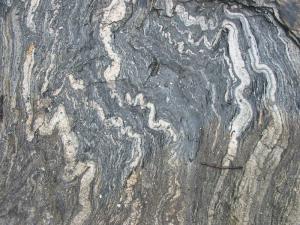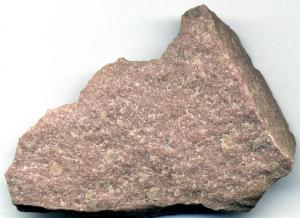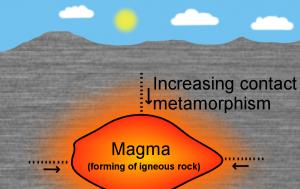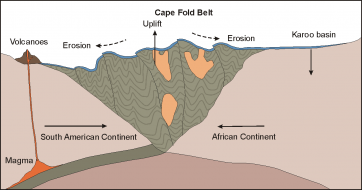Metamorphic Rocks
Metamorphic rocks are formed when other rocks are forced into the Earth where they heat up, become pliable, twist and fold, and are under extreme pressure. Superheated and reactive fluids can also metamorphose rocks. Sometimes meteorites hit the ground so hard that they too can change rock. The word "morph" means to change, just like a metamorphosed caterpillar is a butterfly.
There are two types of metamorphic rock textures: foliated and non-foliated. Foliated rocks occur when the mineral grains are aligned in a parallel fashion. Non-foliated rocks do not have aligned mineral grains.
All metamorphic rocks have what is referred to as a parent rock. The parent rock is the rock from which the metamorphic rock came. For example, quartzite came from sedimentary rock sandstone. As sandstone is driven deep into the Earth its mineral grains were squeezed and the outcomes is quartzite. Below is an image of parent rocks and how they change from one type of rock to another.
There are also two types of metamorphism: contact and regional. Contact metamorphism occurs adjacent to magma bodies. It occurs because the magma is supplying the heat to nearby rocks to make them pliable. Meteorites also cause contact metamorphism when the meteorite slams into the ground. Regional metamorphism occurs in very large-scale areas, like mountain ranges. As mountain ranges are being formed, big blocks of rock called plates, slam into each other creating pressure and generating the heat to bend and fold rocks causing mineral grains to realign.
Using the internet or other resources fill out the table and answer the questions in the following assignment.
SUSD5 student version of Metamorphic Rocks Table
Buy this assignment at Teacher Pay Teachers for $0.50 cents.













